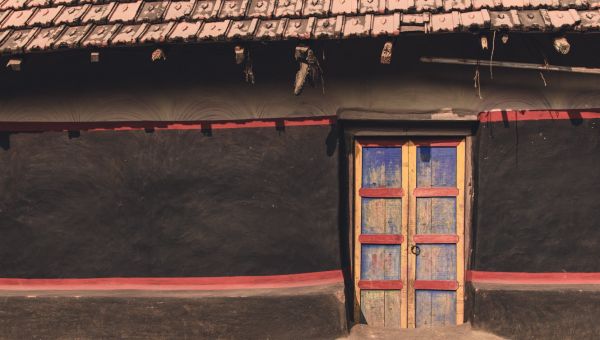I do believe we are spoilt in the western world about where we live and have become picky over what our houses should have – ‘it must have three bedrooms, at least one en-suite’, ‘parking space for two cars’, ‘views to die for’, ‘a study and a downstairs loo’, ‘flat land for my garden/veggies/sheds’ - you get my drift. I am not saying everyone wants this, but in an ideal world, these are the sort of things we would be looking for. To most of us, home is a four-walled building on fixed ground - but this is not the case, not for everybody.
I took a look at a selection of the houses people are happy to call homes in other countries, and it’s a bit of an eye-opener. In some places, people have to build their own homes - not unusual for some you might say - but they have to make their own bricks from mud before they start. But they aren’t all little mud huts with thatched grass roofs – the Great Mosque of Djenne in Central Mali is certainly made from mud and straw bricks but is big enough to hold over 3,000 people. Now a UNESCO World Heritage Site, it was built in 1907 and every year the community get together to repair any damage.
In Rwanda houses are also often made of mud, grass and banana leaves with clay tiles and thatched roofs. In Kenya, the Maasai tribe live in manyatta, a grouping of small homes made from mud, cow dung and sticks. The homes are grouped together in a compound to help protect them from wild animals. In Thailand, houses are traditionally built of sticks and bamboo and are raised above the ground by posts. In Sri Lanka, people weave their homes out of palm fronds and sticks, and in rural Ecuador, homes are made from mangrove wood and eucalyptus. Deep inside Cambodia, whole villages are built on floating platforms, and boats are needed to get from one to another.
In some places in Spain, homes have been made in caves cut into the hillsides, but have all the mod-cons you would expect from the civilized world, and in parts of northern China, people have been living in cave dwellings for centuries. In fact, cave dwelling isn’t as strange as you might think - in Coober Pedy in Australia, ‘dugouts’ are shelters built under the surface of the earth for protecting the locals from the heat of the scorching summer temperatures, all fully equipped for the modern world. Furthermore, the area is also notorious for dust storms, so almost half of the people residing in this Australian town live underground, even churches and museums have adopted this idea. Something you might not know – it is also famous for opal mining, and is sometimes called ‘the opal capital of the world’.
There are tribes still in our world who avoid contact or interaction with society, who are true indigenous people, who are unaware of national states, monetary economy and have no knowledge of anyone but their own small society. They still hunt with bows and arrows, and would probably view a mobile phone with fear. They are untouched by our diseases too, and contact with the rest of human life would no doubt wipe them out from diseases we have long since eradicated.
I am not saying we have to go back to building bricks and using straw for our homes or going ‘down under’, it’s just my way of comparing our way of life with others, and we have so much to be thankful for, whether it be running water, light at the flick of a switch or a roof that doesn’t leak. We take so much for granted. But those people In Africa or China might think the same way – maybe they too, are grateful for what they have, happy and proud to have a small home to bring their families up in – it's all relative, isn’t it.
I also wonder if we ‘modernised’ their lives, would they be any happier?
I think they probably sleep well enough with what they have.
Marilyn writes regularly for The Portugal News, and has lived in the Algarve for some years. A dog-lover, she has lived in Ireland, UK, Bermuda and the Isle of Man.

















Well, in 20% of homes in Portugal, it rains inside.
By K from Algarve on 06 Oct 2021, 09:53
Well, in 20% of homes in Portugal, it rains inside.
By K from Algarve on 06 Oct 2021, 09:53